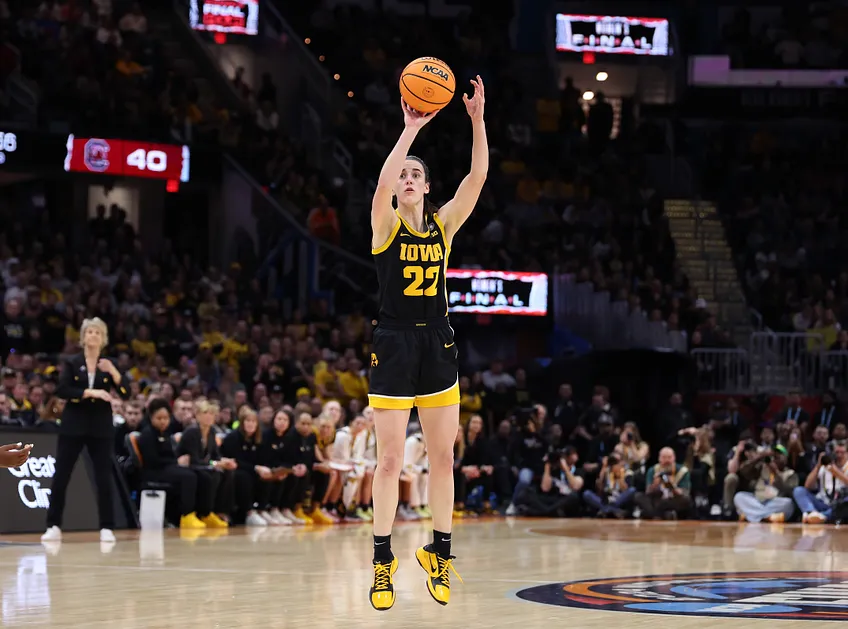His answer? Get your children engaged with as many different activities as possible, sports or otherwise.
Beyond basketball and soccer, Caitlin at some point during childhood was involved with piano, softball, tennis, track and field and volleyball. As her parents look back now, all of those activities elevated certain skills, both mentally and physically.”
There are as many different paths to the top as there are individuals to traverse them, but I think it’s worth pointing out that Clark’s developmental background is representative of the norm, not the exception, for elite athletes. Even as scientific research to that effect continues to mount, it is increasingly ignored in practice, at least in youth sports development in the United States and numerous other countries. (There are some countries that seem to be paying attention.)
On that note: hot off the presses is yet another study making the case that optimizing for youth sports performance undermines longer-term development. I highlight that specific theme because I think it’s the fundamental idea that runs through every page of Range (but that would have made for a less snazzy subtitle): short- and long-term development are often in conflict, whether you’re choosing a career or simply learning a new skill.
In this latest paper, the first author is German sports scientist Arne Güllich, who has done a ton of work in this area. Güllich and his Austrian colleague Michael Barth collected studies from 2009 to 2022 that compared the performances of athletes in “talent promotion programs,” or TPPs. The research covered more than six thousand athletes in all, about two-thirds of whom competed in team sports, and one-third in individual sports.
TPPs are talent development pipelines that select promising athletes at various (sometimes very young) ages and seek to accelerate their development, typically through more support staff, fancier facilities, more high-level competitions, and higher volumes of sport-specific practice. You can think of the moment a kid enters a TPP as a moment of heightened specialization.
TPPs are expensive to run, and often involve high opportunity cost for the young athlete, who will typically spend less time on school, with family, or doing other things — including other athletic activities — and may be forced to relocate. Thus, it would be nice to know if TPPs get substantial bang for their substantial bucks.
Spoiler alert: the earlier kids are selected into a TPP, the worse the picture looks, which is kind of exactly the opposite of why the TPPs exist, at least at very young ages. Here is how the researchers put it:
“Effects on short-term junior performance and long-term senior performance were opposite, whereby higher-performing junior athletes commenced TPP involvement at younger ages than lower-performing junior athletes. In contrast, higher-performing senior athletes commenced TPP involvement at older ages than lower-performing senior athletes.”
The best adult performers were typically what Güllich and Barth call in the paper “side-entry” athletes, who were not initially selected for a TPP and came into the talent development pipeline later. So what’s going on?
Güllich and Barth point to a few different likely causes, which appear repeatedly in Güllich’s other work, and fall into two buckets. The first: bad selection. The earlier you force someone to specialize, the more likely you get the wrong person in the wrong spot. That’s even more true when selection occurs prior to puberty. Unsurprisingly, when selection happens really early, there’s a pronounced “relative age effect.” That is, coaches select kids born early in their birth cohort, mistaking biological maturation for long-term potential. When one kid is selected for specialization at an early age, they are essentially deselected from other opportunities that might turn out to be a better fit. (In the UK and Australia, there have at times been “talent transfer” programs that allowed adult athletes to try switching sports to counteract some of that problem; talent transfer programs in both countries produced Olympic and world champions.)
The second bucket: lost benefits of diversification. Intense specialization at an early age is a major risk factor for burnout, dropout, and overuse injuries that did not used to be seen in kids, but that are likely to hamper the athlete’s development. Movement diversification seems to have a protective effect against overuse injuries, even if the athlete is doing a ton of overall activity. But Güllich’s work, and other associated work, has also argued for a skill-learning benefit to early diversification. That is, diversification develops general physical skills (sometimes called “physical literacy”) and sets the athlete up to be more adept at learning new skills in the future. Güllich and Barth note in this paper, as they have in previous studies, that athletes with a more diverse athletic background seem to have an “efficiency” advantage when it comes to getting more improvement for a given amount of practice.
In conclusion, Güllich and Barth write, the best adult performers, as kids, “accumulated less main-sport practice and more other-sports practice, and reached performance ‘milestones’ at older ages.” They point out that this does not call into question the importance of extensive practice and sophisticated support, but that it doesn’t look good for the “particularly accelerated childhood/adolescent development” approach that enforces very early hyperspecialization.
This is now the fourth meta-analysis (a combination of the results of many studies) that I’ve read in the last two years that has come to the same conclusion that Güllich and Barth summarize thusly:
“Successful junior athletes and successful senior athletes are not one identical population but are largely two disparate populations.”
Like the other three meta-analyses, I expect it to be largely ignored in practice. Except maybe in Norway.
Thanks for reading. And if you’re interested in the tradeoff between short-term optimization and long-term development beyond the sports world, I wrote a book about it. (The ebook appears to be on sale for $4.99 at numerous retailers.)
And if a friend (or helpful enemy) forwarded this to you, you can subscribe here:

